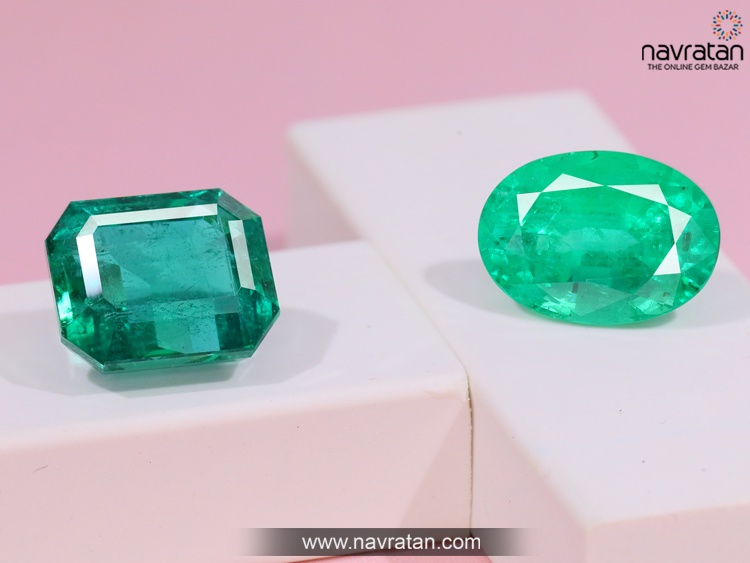Emeralds, the radiant green gemstones, have captured human imagination for centuries. Their allure lies not only in their stunning beauty but also in the belief that they possess mystical and healing properties. If you're intrigued by the world of emerald stones and are contemplating a purchase, one of the first things you might be wondering about is their price. In this blog, we will delve into the factors that influence the price of emerald stones and provide you with some insights to guide your purchase decisions.
1. Color: The Green Spectrum
Emeralds are known for their mesmerizing green hues. The most valuable emeralds exhibit a deep, vibrant green color with a hint of blue. This color is often referred to as "emerald green." The closer an emerald's color is to this ideal, the higher its price will be. Lighter or less saturated greens are generally less valuable. Clarity is also a factor; the more inclusions an emerald has, the lower its price, unless those inclusions form a unique pattern known as "jardin," which can enhance its value.
2. Carat Weight: Size Matters
As with most gemstones, the carat weight of an emerald significantly impacts its price. Larger emeralds are rarer and, therefore, more expensive. However, it's crucial to remember that an emerald's value isn't solely determined by its size; the quality of color and clarity still plays a vital role.
3. Clarity: The Fewer Inclusions, the Better
Emeralds often contain characteristic internal inclusions, known as "jardin" in the trade. These inclusions can vary in size and visibility. In general, emeralds with fewer and less visible inclusions are considered more valuable. However, some collectors appreciate the unique patterns formed by inclusions, which can increase the price of certain emeralds.
4. Origin: Geographic Influence
The geographical origin of an emerald can also have a significant impact on its price. Emeralds from certain regions, such as Colombia and Zambia, are highly sought after and command higher prices due to their exceptional color and quality. Colombian emeralds, in particular, are famous for their deep green color and are often considered the benchmark for emerald quality.
5. Treatment and Enhancement: Disclosing the Truth
Many emeralds undergo treatment processes to improve their appearance. Common treatments include oiling and resin filling to reduce the visibility of inclusions. It's essential to inquire about any treatments an emerald may have undergone, as this can affect its price. Natural, untreated emeralds are generally the most valuable.
6. Market Conditions: Supply and Demand
Like any commodity, the price of emeralds can fluctuate based on market conditions. Economic factors, changes in consumer preferences, and global supply can all influence the pricing of emeralds. It's a good idea to keep an eye on the market if you're considering an emerald purchase.
Conclusion
Emeralds are timeless gemstones with a rich history and undeniable beauty. Their price can vary widely based on factors like color, carat weight, clarity, origin, treatments, and market conditions. Before making a purchase, it's essential to educate yourself about these factors and, if possible, seek the guidance of a reputable gemologist or jeweler. With the right knowledge, you can confidently explore the world of emerald stones and find the perfect one that aligns with your preferences and budget. Whether you're drawn to emeralds for their aesthetic appeal or their alleged metaphysical properties, owning one of these enchanting gems can be a rewarding and timeless investment.


No comments yet